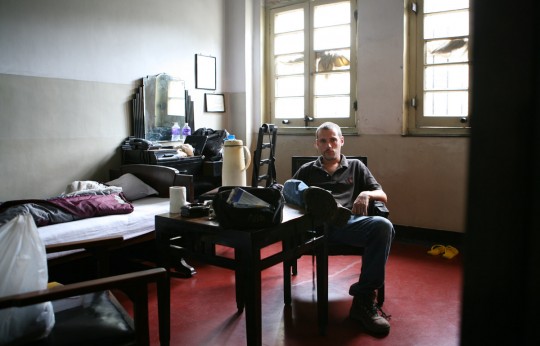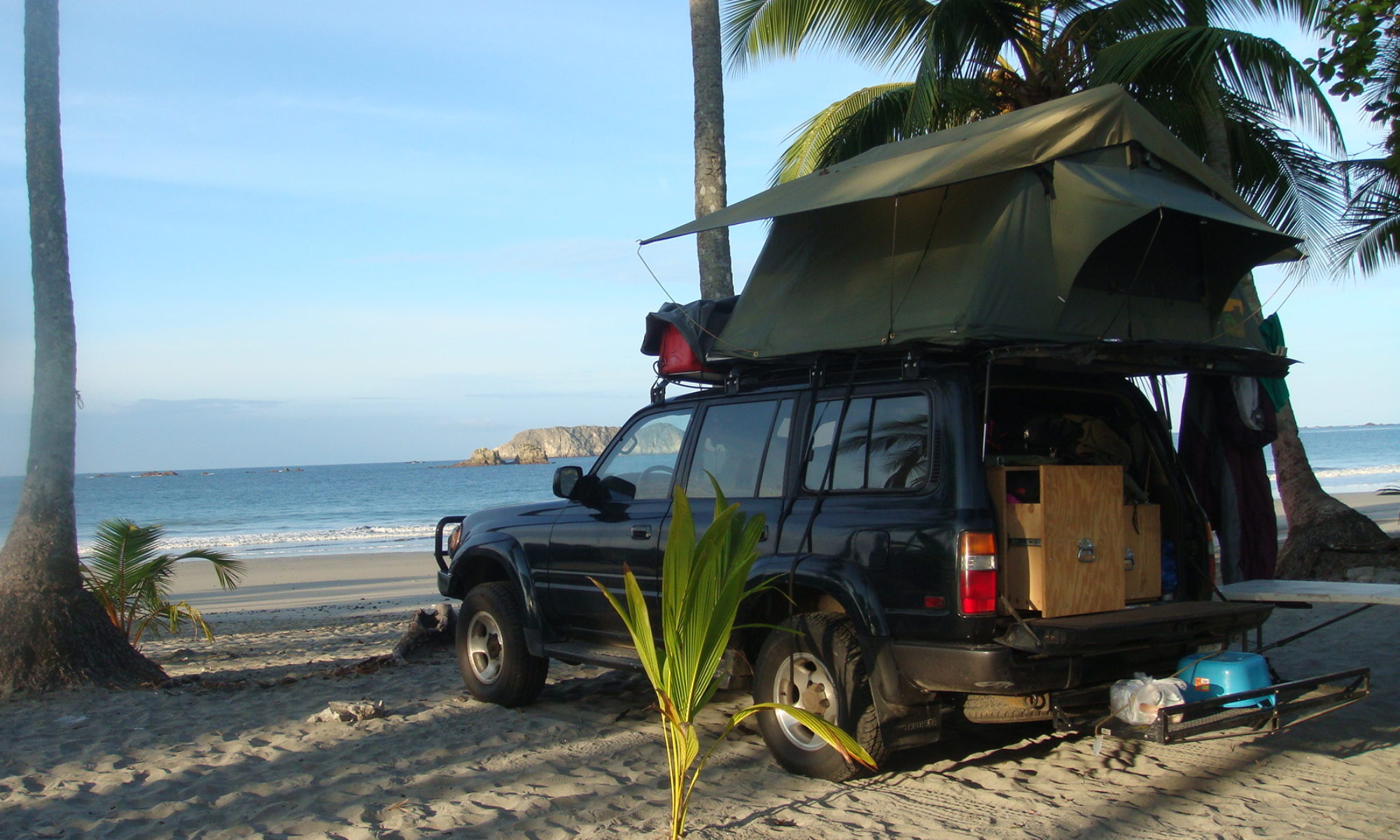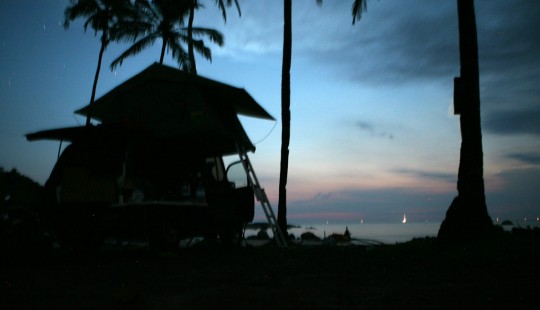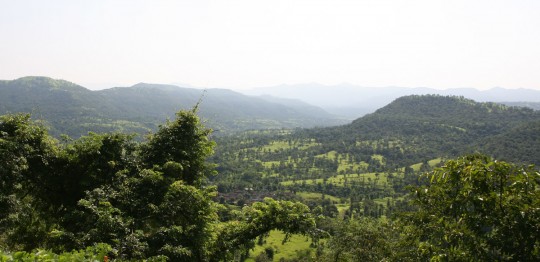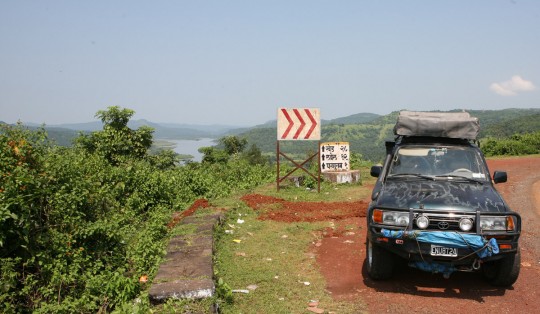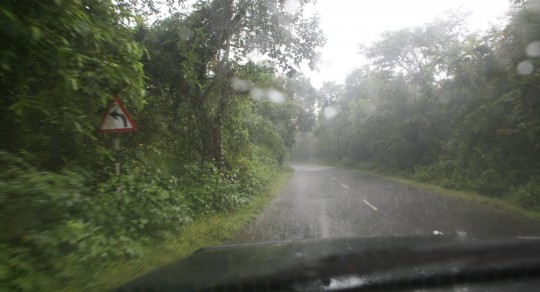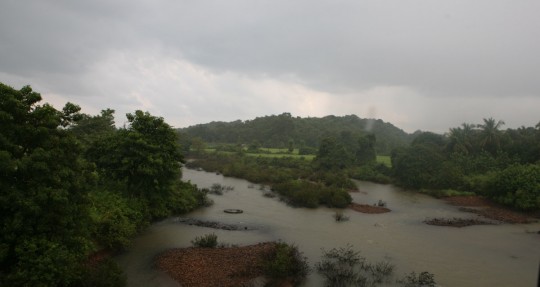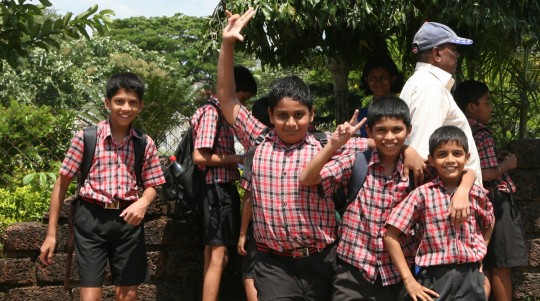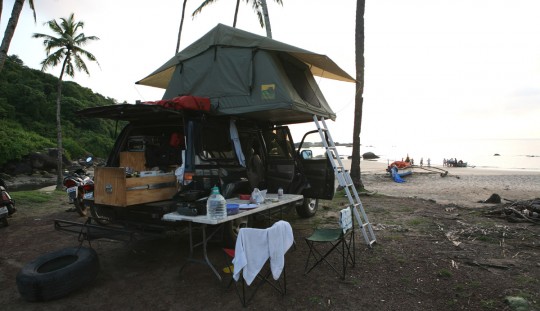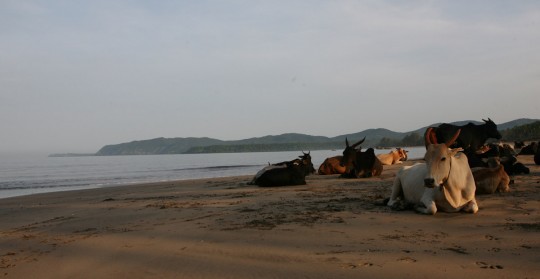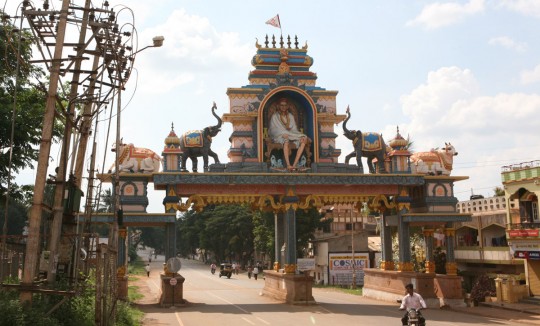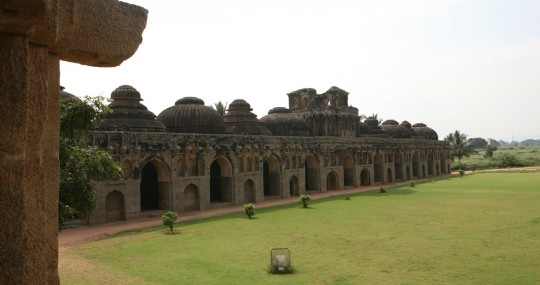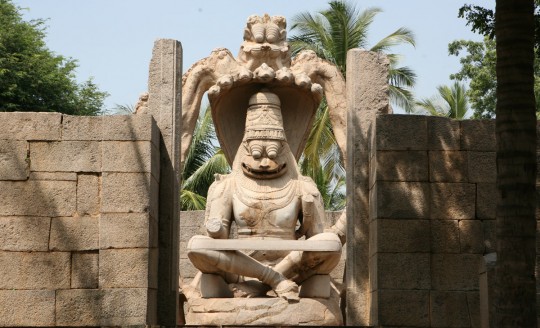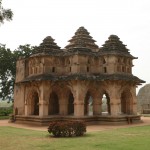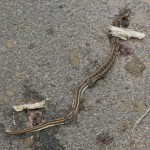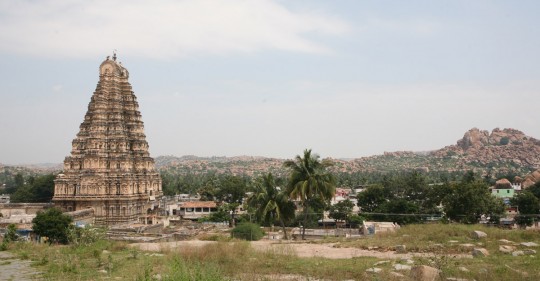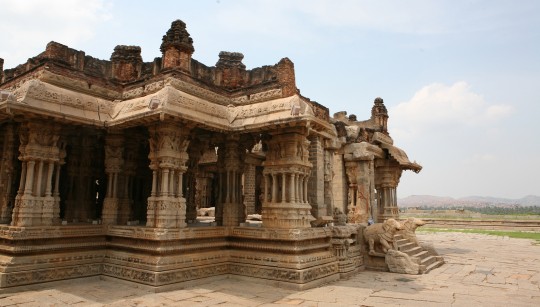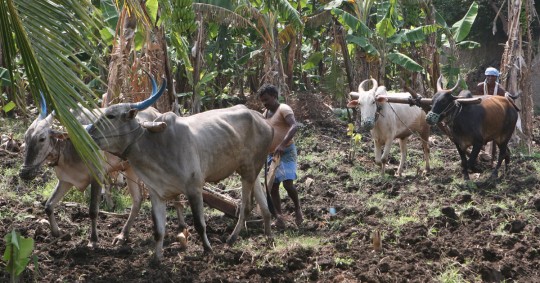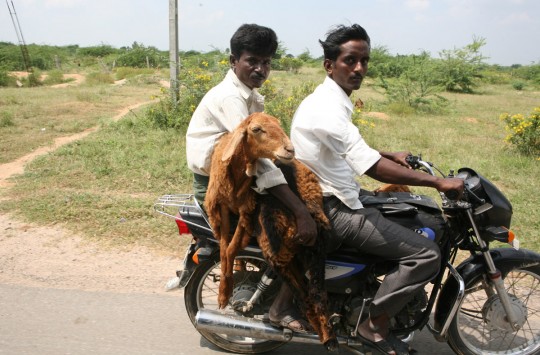
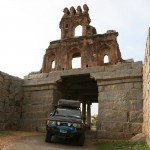
From Hampi to the eastern side of India, it is not a region well known for travelers. In fact, not many tourists are to be seen on the road. Officially, there’s not much to see there, except maybe Hyderabad, which I chose to avoid as I am not looking forward to the craziness of Indian hyper populated cities. I use mostly secondary roads, and the progress can be slow. Roads are bad at places, with many of potholes, so I find myself in driving conditions that remind me a little of Africa.
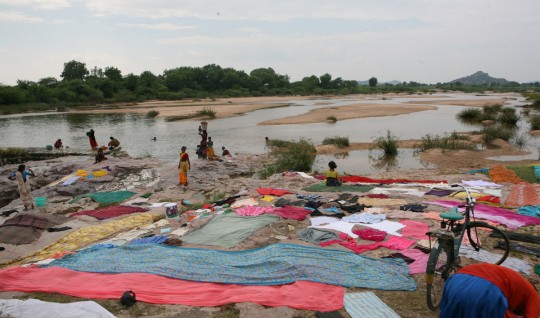
People are driving in an incredible dangerous way, not paying attention to any rules with vehicles in terrible shape. It is understood that the battery should be saved, so many people don’t use headlights at night except when they get close to you. Between Mumbai and Calcutta, I may have seen three people using their turn signal. And Indian drivers don’t need any rearview mirrors. In fact they often just keep it folded to save space.
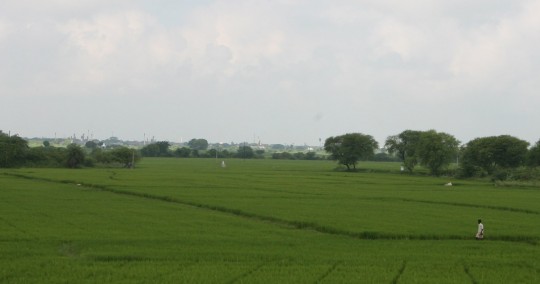
I avoid driving at night when people seem to think it is OK to drive even faster.
From Hampi I go east and avoid Hyderabad, passing south of the city. Then, as I get closer to the coast I go north toward Calcutta. In the first part of this leg I slept at gas stations along the way where I only get moderate rest and wake up with ten people watching me. Everybody is very nice, and as I said in my previous post, very curious about my adventures. The only problem is that I notice that little things tend to disappear as keeping control of the crowd can be tricky. Once, as I stop to get gas, someone even took off with my tank cap forcing me to hunt a new one in the nearby city.
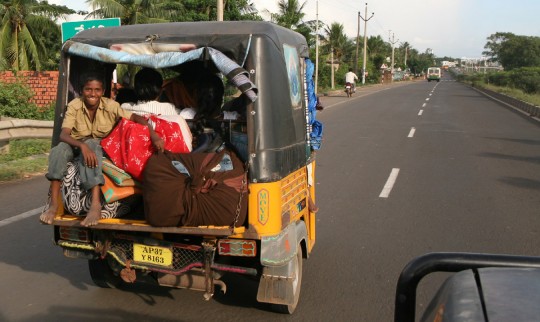
The area stands out with pretty landscape of rolling plantations. Lot of cows around, as always, but also I can now spot pigs, which I didn’t see since a long time as they are nowhere to be seen in Muslim countries. How ironic, I am now as surprise to see pigs than I was to see elephants in Africa.
You see a lot of misery around, and at best people live in a really low quality of life. It is very different from Central America where people enjoy a minimum of comfort, or at least some decent place to live.
Once I get on the coast, I stop in various places going north, including Visakhapatnam or Gopalpur. I pay hotels to let me use their parking lots. There, I get more privacy and can relax a bit. Things should be similar in Bangladesh where the population density should be even higher.
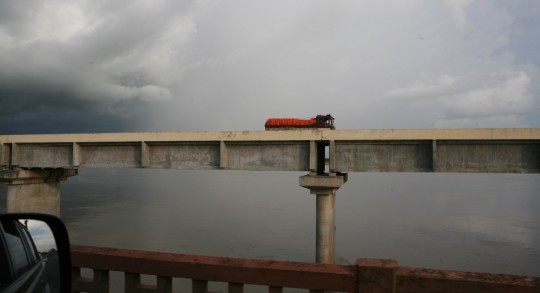
I am still surprised at the fact that most people don’t speak English and communication can be difficult. There are no signs on the road and have to keep asking people for direction.
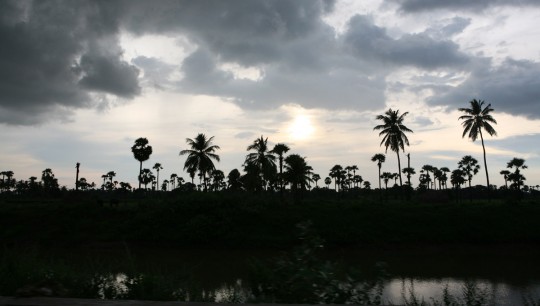
Food is sometimes difficult to find outside of populated areas and I have to use my canned reserves to avoid not-so-seducing meals. When eating in places along the road, I mostly stick to vegetarian food, which I consider safer. But even so, an insect encrusted vegetable curry is not necessary appetizing.
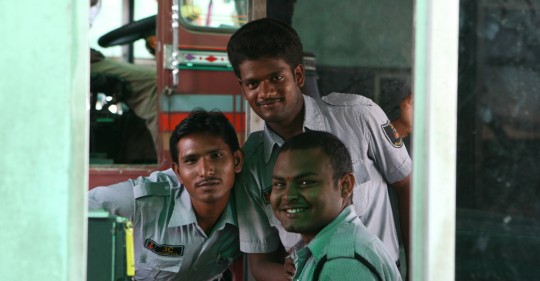
Finally I make it to Calcutta and I can enjoy the diversity of restaurant and try to gain back the lost weight. I check in at the “Broadway” a very old school hotel where I can get a minimum of luxury for US$10 a night. No hot showers still, but real showers at least.
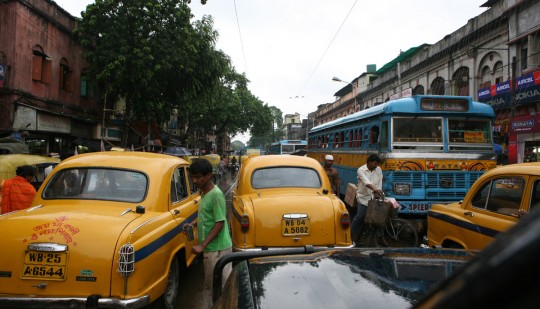
The first thing I do when I arrive in the city is to go to the Bangladesh embassy to apply for a visa. That should be ready in two days for the amount of US$35. Meanwhile, I will spend time in the city and explore the crowded and narrow streets.
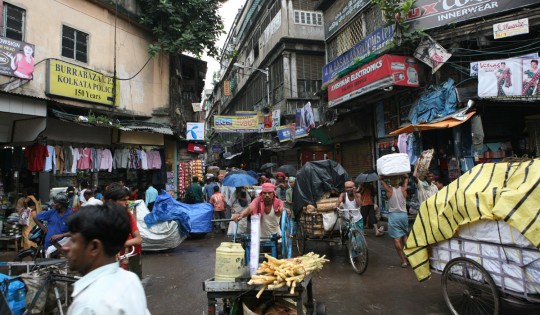
When I will be ready to leave, it should be two hours of driving to the Bangladesh border. From there, I expect slightly worst roads and a five hours drive to Dhaka, the country capital.
